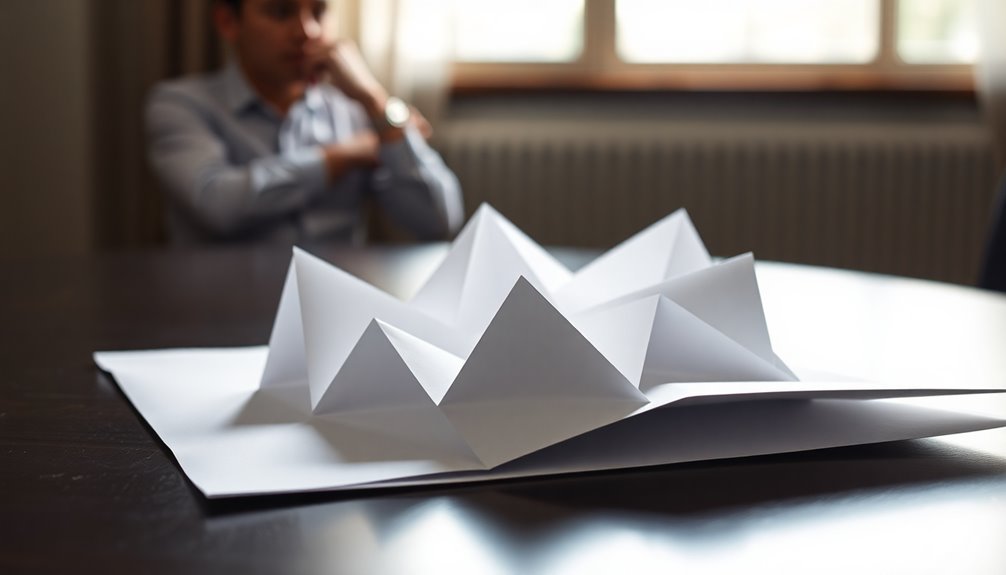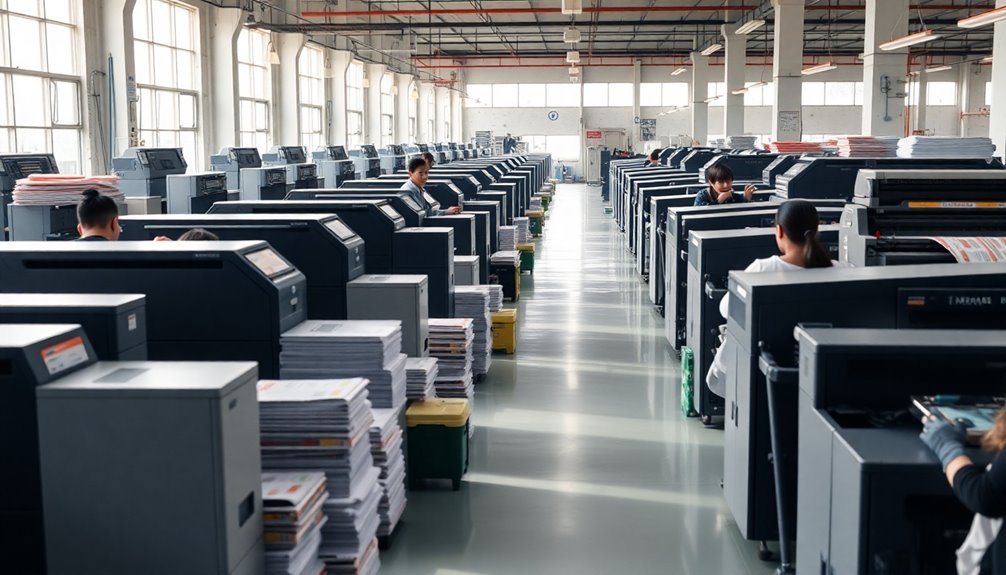You can't fold standard paper in half more than seven times because of its thickness. Each fold doubles the thickness, making it increasingly resistant to further folding. However, thinner materials, like tissue paper, have been folded up to 12 times, and more advanced techniques using hydraulic presses can achieve even greater folds. Some experiments, like those conducted by Mythbusters, showed that with mechanical help, you can fold paper over 11 times. It's fascinating to explore how different materials and methods can push these boundaries, revealing more about the science of folding.
Key Takeaways
- Standard paper typically can only be folded seven times due to its thickness and resistance to further folding.
- Thinner materials, like tissue paper, can achieve up to 12 folds, surpassing the traditional limit.
- Mechanical folding techniques, such as using hydraulic presses, can reach 12+ folds efficiently.
- Extreme thickness after multiple folds can lead to paper shattering instead of further folding.
- Theoretical calculations suggest that specific conditions and materials could allow for even higher folding limits.
Understanding Folding Limits
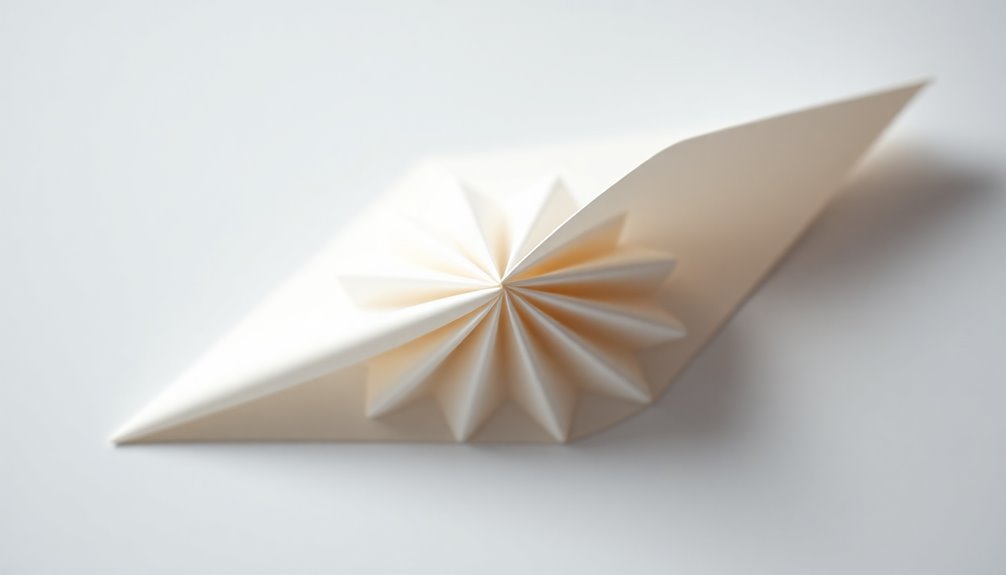
Have you ever wondered why you can't fold a piece of paper in half more than seven times? The answer lies in the properties of a single sheet of paper. Each time you fold it, you double the thickness of the paper, which dramatically increases its overall size.
After just a few folds, the thickness becomes so substantial that further folding becomes impractical. The number of folds you can achieve isn't just a matter of technique; it's deeply influenced by the paper's thickness and width. For standard paper, this typically limits you to seven folds.
However, if you use thinner materials like tissue paper, you might break this limit—just like Britney Gallivan did when she folded a 4,000-foot long tissue paper twelve times!
The mathematical formula n = 0.96 ln(w/t) shows how the initial width and thickness determine the maximum number of folds. So, while you might be frustrated by the limits of a standard sheet of paper, remember that the thickness of the paper plays a vital role in this folding phenomenon.
The Role of Thickness

Thickness plays a pivotal role in how many times you can fold a piece of paper. Each time you fold the paper, its thickness doubles, quickly creating a physical barrier that limits further folds.
For standard printer paper, which has a thickness of about 0.004 inches, you'll find that it can typically be folded seven times before the thickness equals the width, making it nearly impossible to fold again.
The relationship between thickness and folds is governed by a specific formula: n = 0.96 ln(w/t). This means that as the thickness (t) increases, the number of achievable folds (n) decreases considerably.
If you think about it, after just nine folds, the thickness can exceed 5 cm, making it unmanageable.
Interestingly, thinner paper allows for more folds. For instance, students at MIT managed to fold a long strip of toilet paper 13 times due to its lower thickness compared to standard printer paper.
This highlights that while you may want to push the limits of folding, the thickness of the paper plays a critical role in determining how far you can go before paper can't be folded anymore.
Historical Record Attempts
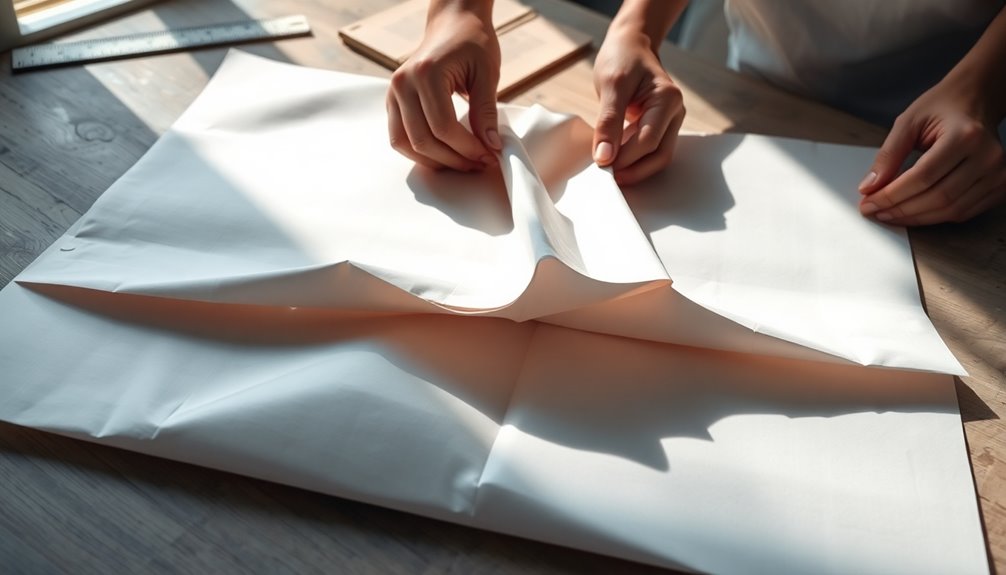
When you think about historical attempts to fold paper, Britney Gallivan's groundbreaking achievement in 2002 stands out.
She challenged the long-held belief that seven folds were the limit by folding a 4,000-foot strip of tissue paper 12 times.
Additionally, experiments like those conducted by Mythbusters reinforced this idea before Gallivan's record, sparking curiosity and debate about the true potential of paper folding.
Britney Gallivan's Achievement
In 2002, Britney Gallivan astounded the world by folding a 4,000-foot long strip of tissue paper a remarkable 12 times, shattering the myth that paper can only be folded in half seven times. This feat took approximately eight hours and took place in a shopping mall corridor in California, showcasing her determination and ingenuity.
Gallivan didn't just rely on sheer strength; she developed specific equations to calculate the maximum number of folds based on the paper's length and thickness. By using a unique technique, she demonstrated that longer, thinner materials could achieve considerably more folds compared to traditional methods. Her achievement proved that the old belief about folding paper was outdated.
The implications of her work extend beyond just a record-setting achievement. It encourages you to think differently about materials and challenges the limits of what you thought was possible.
Britney Gallivan's folds pushed boundaries and inspired curiosity about the physical properties of paper. Her record remains a proof of human creativity and determination, inviting you to explore and experiment with the physics of folding paper in new ways.
Mythbusters' Experiment Results
The popular belief that paper can only be folded in half seven times faced a significant challenge when the Mythbusters team conducted their groundbreaking experiment. In an airplane hangar, they set out to test the limits of folding paper. Using a steamroller and a forklift, they managed to fold a large sheet of paper an impressive 11 times.
This experiment demonstrated that with the right mechanical assistance, you could surpass the traditional seven-fold limit. However, the team discovered that after the seventh fold, the difficulty increased dramatically. The paper began to shatter instead of fold, indicating the physical limitations of traditional folding methods.
When they utilized a hydraulic press, it produced an audible breaking sound at the seventh fold, revealing how pressure affects paper's integrity. The results highlighted that paper doesn't just fold; it can turn into pulp under extreme stress.
Ultimately, Mythbusters' experiment challenged the long-held belief surrounding folding paper. By showcasing the physical properties of paper, they proved that, while folding paper may become increasingly difficult, it's possible to achieve more than seven folds with the right tools.
Mechanical Folding Techniques
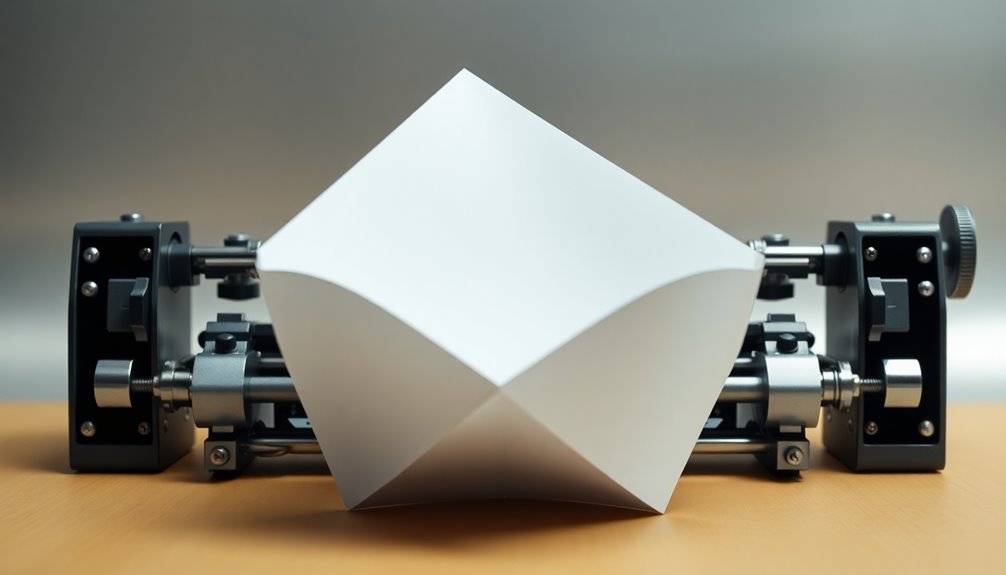
While traditional manual folding techniques limit you to about seven or eight folds, mechanical folding methods can greatly increase that number. By utilizing tools like hydraulic presses, these techniques apply the necessary force to fold paper beyond conventional limits. This mechanical advantage allows you to explore folding thicker materials or larger sheets of paper, considerably enhancing your folding potential.
| Technique | Description | Folding Capacity |
|---|---|---|
| Hydraulic Press | Uses hydraulic force to fold | Up to 12+ folds |
| Automated Folder | Mechanical arms for precision | Up to 15+ folds |
| CNC Folding Machine | Computer-controlled precision | Theoretical limits of 20+ |
It's important to note that while mechanical methods can push the boundaries of folding, experiments show that paper may shatter rather than fold after a certain point due to extreme pressure. Innovations in these folding techniques are essential to revealing the theoretical limits of various materials, far surpassing the standard seven folds achieved manually. With the right tools, the possibilities become nearly endless!
Experimental Evidence
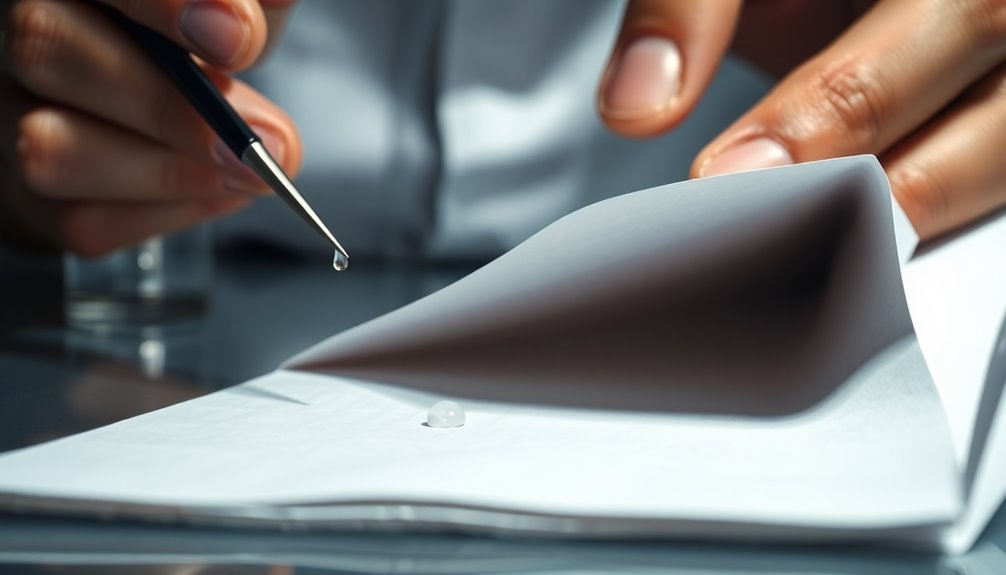
Experimental evidence reveals that folding paper more than seven times isn't just a myth; it's influenced by the paper's thickness and length. Most standard printer paper limits you to about seven folds due to its thickness.
However, in 2002, high school student Britney Gallivan challenged this notion by using a 4,000-foot-long sheet of tissue paper, successfully folding it 12 times. This remarkable feat shows that you can indeed fold a piece of paper more than you might think.
Additionally, thinner materials like aluminum foil can achieve around 14 folds, proving that the type of paper matters considerably. The TV show Mythbusters also explored this by employing a hydraulic press on a large sheet of paper, managing 11 folds before the paper shattered. This experiment highlights the physical constraints of conventional folding.
Gallivan's success wasn't just luck; she calculated the potential folds using specific equations that take into account the ratio of the paper's length to thickness.
This mathematical approach offers experimental evidence that the number of times you can fold a piece of paper can vary dramatically depending on its properties.
Implications for Material Science
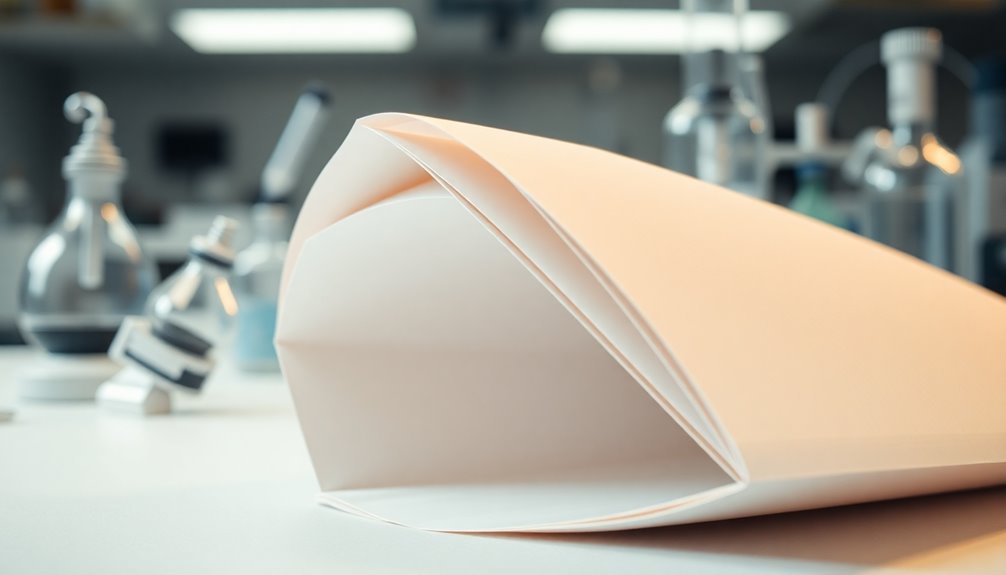
When you consider how paper folds, you're really looking at the broader implications of material properties.
The thickness of a material directly influences its folding limits and can teach you a lot about its behavior under stress.
This understanding can lead to practical applications in engineering, where you can design materials that better withstand various forces.
Material Properties and Folding
How do material properties influence the folding capabilities of paper? The ability to fold paper in half is greatly impacted by its material properties, such as thickness and length. Typically, you can fold a standard sheet of paper only about seven times.
However, if you use a long, thin tissue paper, as demonstrated by Britney Gallivan, you can achieve a remarkable twelve folds. Each time you fold the paper, its thickness doubles, causing resistance to increase exponentially. This rapid growth complicates further folding after just a few iterations.
The theoretical maximum number of folds can be calculated using the formula n = 0.96 ln(w/t), which relates the initial width (w) to the thickness (t) of the paper. Curiously, different materials yield different results; for instance, thinner aluminum foil can be folded up to fourteen times.
This is due to its lower thickness and higher flexibility compared to standard printer paper. Understanding these material properties not only enhances your folding techniques but also provides insights into broader concepts in material science, such as mechanical behavior under stress and implications for design and engineering applications. Additionally, the exploration of herbal alternatives in the beauty industry exemplifies how natural materials can influence the effectiveness of products, similar to how paper's material properties affect its folding capabilities.
Thickness Impact on Limits
The thickness of paper directly influences the limits of how many times it can be folded, creating significant implications for material science. Each fold doubles the thickness, quickly leading to resistance that makes it nearly impossible to fold further. For standard printer paper, after about seven folds, the thickness surpasses the width, limiting your ability to continue.
To illustrate the impact of thickness on folding limits, consider this comparison:
| Material Type | Max Folds |
|---|---|
| Standard Printer Paper | 7 |
| Tissue Paper (4,000 ft) | 12 |
| Cardstock | 5 |
| Aluminum Foil | 6 |
| Fabric | 8 |
As you can see, the thinner the material, the more folds it can achieve. This relationship is captured by the formula n = 0.96 ln(w/t), showing that for a single piece of paper, thickness dramatically alters the folding dynamics. A thicker sheet not only requires more force to fold but also results in a larger folded mass, emphasizing how vital thickness is in material selection for various applications.
Practical Applications in Engineering
Understanding the limitations of paper folding sheds light on critical engineering applications, especially in material selection. When you try to fold a single sheet of paper, you quickly realize that after about seven folds, you hit a barrier due to the exponential increase in thickness.
This limitation isn't just a trivial observation; it highlights essential mechanical properties like tensile strength and stress distribution.
In engineering, these insights inform the design of materials that must withstand bending or folding without failing. For instance, in aerospace and structural design, understanding how materials react under stress can lead to more resilient designs.
If you know how paper can be folded, you can draw parallels to how various materials behave under similar conditions.
Frequently Asked Questions
Is It Possible to Fold a Paper 10 Times?
You might think folding a piece of paper 10 times is impossible, but it depends on the paper's thickness and size.
While standard paper usually limits you to about seven or eight folds due to increased thickness, using a longer, thinner strip can help you achieve more.
If you're willing to experiment with different materials or mechanical aids, you could potentially reach that elusive tenth fold.
It's all about the right conditions!
Is It Possible to Fold a Paper 9 Times?
When you try to fold a standard sheet of paper, you'll find that reaching nine folds is quite tricky.
The thickness increases exponentially with each fold, making it nearly impossible to continue without losing structural integrity. Most experiments show that after about seven folds, you'll struggle to proceed.
However, if you use a long strip of paper or different materials, you might achieve more folds, but standard paper won't cooperate that easily.
What Is the World Record for Folding Paper in Half?
The world record for folding paper in half is 12 times, set by Britney Gallivan in 2002.
She used a 4,000-foot long piece of tissue paper, which allowed her to achieve this impressive feat. It took her about eight hours to complete the folds in a shopping mall corridor.
Her achievement shows that the material's length and thickness play essential roles in how many times you can successfully fold paper.
Can You Fold a Paper 8 Times in Mythbusters?
You might think folding paper eight times is impossible, but the Mythbusters team showed otherwise with their experiments.
While manual methods typically limit you to seven folds, they used a hydraulic press to achieve eleven folds. This illustrates that mechanical equipment can overcome the usual barriers.
However, keep in mind that after a certain point, the paper can shatter, showing the physical limits of the material under pressure.
Conclusion
To summarize, you've learned that folding paper more than nine times is nearly impossible due to its thickness and the exponential increase in size with each fold. Historical attempts and mechanical techniques show just how challenging this task is. However, these explorations highlight fascinating implications for material science, pushing the boundaries of what we comprehend about materials. So next time you grab a piece of paper, remember the limits of folding and the science behind it!

